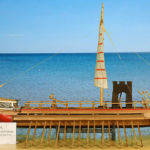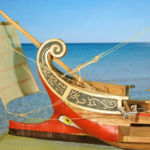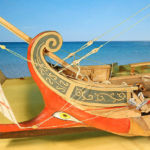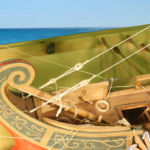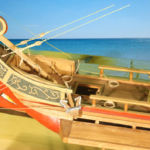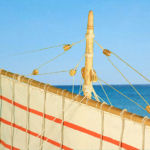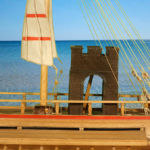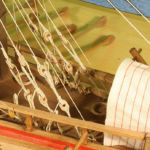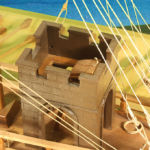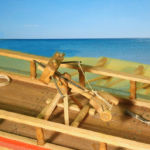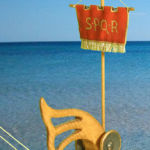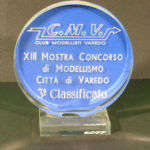(ita/eng)
MINERVA – LIBVRNA CLASSIS PRAETORIAE
MISENVM – DCCXXIII Ab-U-C
Bireme romana, I secolo a.C.
Le biremi (liburne) rappresentavano, assieme alle triremi, il nerbo della flotta da guerra di Roma. Veloci e manovriere, potevano imbarcare fino ad una centuria (80 uomini) di fanti. Adibite principalmente a compiti di sorveglianza anti-pirateria, operavano anche come pattugliamento fluviale sui grandi fiumi – Reno e Danubio – che rappresentavano il limes nord-orientale dell’Impero…
Queste navi potevano imbarcare artiglieria, come la ballista qui rappresentata.
La presente ricostruzione, anche se sostanzialmente corretta, è parzialmente opera di fantasia, in quanto nessuna di queste navi è giunta fino ai nostri giorni.
Dalla base di Capo Miseno operava la flotta principale di Roma (classis praetoria) sotto il comando di un legatus classis. Un’altra importante base navale era a Ravenna.
Ballista romana, I secolo a.C.
La ballista, macchina bellica di uso sia terrestre che navale, poteva scagliare con notevole precisione frecce in legno o in ferro fino ad una distanza di rispettivamente 500/200 metri.
Come artiglieria navale veniva utilizzata per colpire le navi nemiche che tentavano lo speronamento: infatti la pesante freccia in ferro sfondava facilmente il ponte (spesso in tiglio) della nave, penetrando sottocoperta dove gettava lo scompiglio tra i rematori, stretti in angusti spazi, interrompendo così il sincronismo della voga. L’utilizzo di tali armi fece in breve tempo scomparire la tattica dello speronamento.
La parola latina per queste frecce era missile (tutto ciò che veniva lanciato da una ballista o catapulta era un missile), quindi potremmo – seriamente – chiamare queste liburne bireme lanciamissili.
LIBVRNA CLASSIS PRAETORIAE
MISENVM – DCCXXIII Ab-U-C
Roman Bireme, 1st century b.C.
The Bireme (Liburna), together with the Trireme (Bi= two, tri=three men at an oar) were the backbone of the Roma navy. Fast and agile, could embark up to a century (80 men) of soldiers. Manly used as anti-piracy in the Mare Nostrum (Mediterranean sea) as well as in the large rivers, Rhine and Danube, which were the North-East limes of the empire. These ships could also carry artillery, as the ballista shown here.
This model, even though substantially correct, is an interpretation from the scarce images we have, as none of these ships has been found.
The Classis praetoria (main fleet) base was in Capo Miseno (North of Naples) at the order of the Legatus classis (Admiral in Chief).
Roman Ballista, 1st century b.C.
The ballista, artillery for both land and sea use, was able to launch with remarkable accuracy heavy wooden/iron arrows up to 500/200 meters.
As naval artillery, its scope was to hit enemy ship attempting the ramming. When the heavy arrow hitted the deck, so reaching the oarsmen sitting in narrow spaces, the rowing synchrony was interrupted. As the use of these ballista spreaded out, the ramming technique quickly disappeared.
The latin word to indicate these heavy arrows is missile, therefore we could correctly – no joke – call this ship a “Missile Launcher Bireme”.
